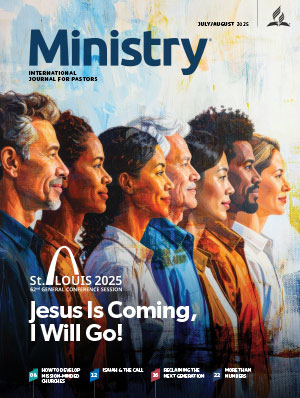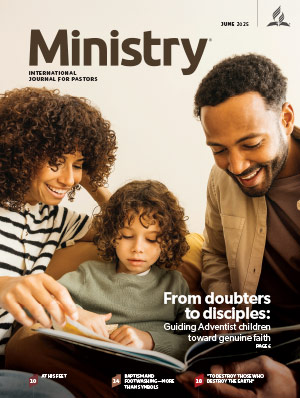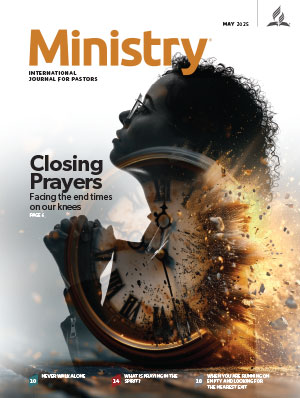Leading a church board meeting can be intimidating and daunting. But with some practical tips and careful planning, it does not need to be. By following the following steps, you can run an efficient, smooth, and positive meeting.
1. Prepare thoroughly
Preparation constitutes at least 50 percent of a successful board meeting. Do your due diligence in advance: Pray, make the necessary calls, bring people on board, understand the issues at stake and the history of the issues to be discussed, and ensure you are ready with the background information. Prepare. Prepare. Prepare.
2. Be informed
Lacking accurate information or being misinformed can undermine your credibility and prevent you from attaining the desired results. Be the most informed person in the room. Prepare thoroughly by gathering reliable data in advance—solid facts often resolve conflicts and drive results. As someone wisely said, “Having the right data is everything; all other arguments are merely supplementary.”
3. Create an agenda
Arriving at the meeting without a well-thought-out, well-organized agenda not only shows your lack of interest and lack of experience but also asks for trouble. As the pastor and board chair, you hold the privilege and responsibility of setting the agenda. Members can request agenda items to be included, but make it clear that last-minute agenda items will not be entertained. Ask board members to submit agenda items the week before the meeting but no later than two days prior. A well-thought-out agenda will help you be organized, keep on track, and avoid unwanted or unvetted issues.
4. Prioritize discipleship and evangelism
Start your agenda with the topic of “evangelism” before moving on to other agenda items. The Church Manual says, “The board is responsible to: 1. Ensure that there is an active, ongoing discipleship plan in place, which includes both spiritual nurture and outreach ministries. This is the most important item for the board’s attention.”1 “The board should permit no other business to interfere with planning for evangelism.”2 Following these instructions keeps the focus on the church’s mission, sets a constructive tone for the meeting, and shows the clear priority of the pastor.
5. Meet with elders in advance
There is nothing more challenging than arriving at the board meeting to find that your elders—the foundation of your board—are not aligned with you or, even worse, are opposed to your ideas. Building consensus and securing their buy-in before the meeting is crucial. Take the time to discuss the agenda with them beforehand, ensuring they understand the issues and provide feedback. When elders see that you have considered their input and invested in thoughtful discussion for the good of the church, they are far more likely to support you and your initiatives.
6. Schedule monthly meetings
In today’s fast-paced world, people have busy schedules, so a monthly church board meeting is typically sufficient to address church business effectively. Meeting too often can lead to burnout, causing members to lose interest or even resign. Also keep meetings concise and focused, lasting no more than an hour to an hour and a half. Avoid turning board meetings into extended sermons, Bible studies, or prayer vigils. Instead, maintain a clear agenda and ensure discussions remain productive and on-topic. Respecting members’ time fosters engagement and long-term commitment.
7. Church board members are volunteers
Church board members are not your employees but volunteers. They willingly offer their time, energy, and resources out of love for the Lord and the church, not for a paycheck or obligation. As a pastor, avoid treating them as subordinates. Instead, honor their dedication by treating them with respect and gratitude. Acknowledge their hard work, thank them sincerely for their contributions, and affirm the value they bring to the church.
8. Establish and follow rules
Church boards, like any board, function best when order is established. Familiarize yourself and the board with Robert’s Rules of Order. Ask members to raise their hands to speak, allow time for comments, and take votes as needed. Lead with a balance of firmness and grace to keep things on track.
9. Avoid confrontation
Avoid confrontations at all costs. The pastor should never engage in strong disputes during a board meeting. The problem is not having disagreements during the board but how you handle them. Handle disagreements with professionalism and grace to set an example of Christlike behavior.
10. Ensure balanced representation
Aim for a balanced board that includes representation from various departments and generations, including women, youth, and young adults, to bring diverse perspectives to the table.
These pointers are not exhaustive, but they will help keep your board meetings productive, smooth, and conflict-free. Remember to pray for God’s guidance—His presence is essential for a fruitful meeting. Start preparing today (number one on the list!), and . . . lead with confidence.













